The New Deal 1933-1940
History
Agricultural Adjustment Act

A law of the New Deal era, designed to boost agricultural prices by reducing surpluses. Agricultural Adjustment Act. The Agricultural Adjustment Act was a law aimed at increasing crop prices by paying farmers to produce less.
Black Cabinet
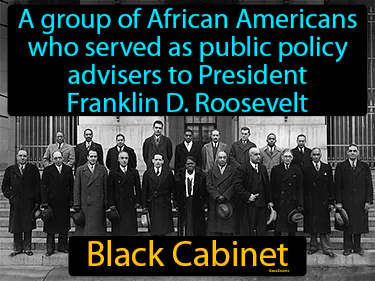
A group of African Americans who served as public policy advisers to President Franklin D. Roosevelt. Black Cabinet. The Black Cabinet was an informal group that advised Roosevelt on issues affecting African Americans during his presidency.
Charles Coughlin
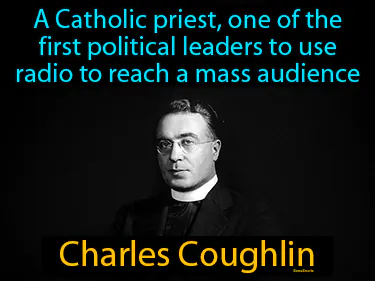
A Catholic priest, one of the first political leaders to use radio to reach a mass audience. Charles Coughlin was a controversial figure in 1930s America known for his influential radio broadcasts that mixed political commentary with religious messages.
Civilian Conservation Corps
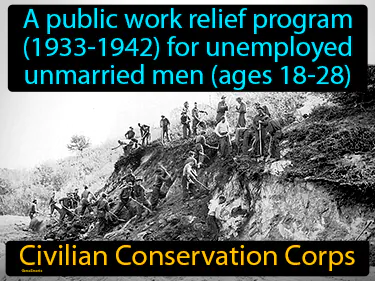
A public work relief program 1933-1942 for unemployed unmarried men ages 18-28. Civilian Conservation Corps. The Civilian Conservation Corps was a New Deal program that provided jobs and environmental conservation projects during the Great Depression.
Congress of Industrial Organizations
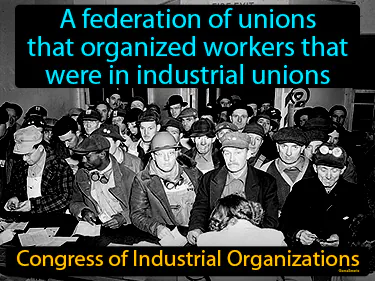
A federation of unions that organized workers in industrial unions. Congress of Industrial Organizations. The Congress of Industrial Organizations was a group in U.S. history that united various worker unions to improve conditions and rights for industrial workers.
court packing
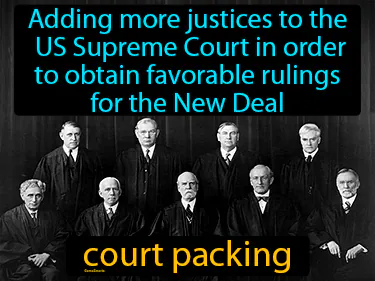
Adding more justices to the US Supreme Court in order to obtain favorable rulings for the New Deal. Court packing. Court packing is the idea of expanding the number of justices on the Supreme Court to shift its balance in favor of certain policies.
deficit spending

The amount by which spending exceeds revenue. Deficit spending. In simple terms, during the Great Depression, the U.S. government used deficit spending to stimulate the economy by investing in public works projects.
doctrine of parity
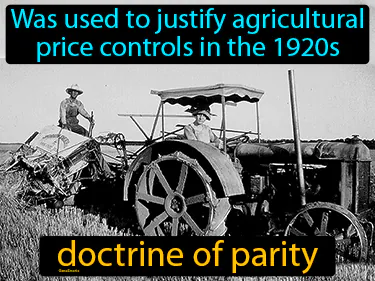
Was used to justify agricultural price controls in the 1920s. Doctrine of parity. The doctrine of parity aimed to ensure farmers received fair prices for their crops, relative to the cost of living and production, to maintain economic stability.
Dorothea Lange
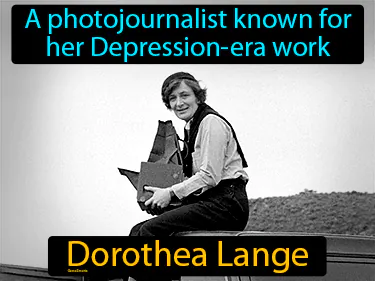
A photojournalist known for her Depression-era work. Dorothea Lange. She was a photographer who documented the struggles of Americans during the Great Depression.
Eleanor Roosevelt
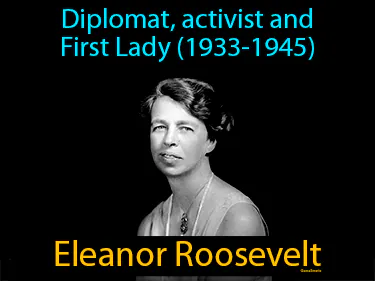
A diplomat, activist, and the First Lady of the US 1933-1945, Eleanor Roosevelt. She transformed the role of First Lady by actively engaging in politics and advocating for human rights.
Fair Labor Standards Act
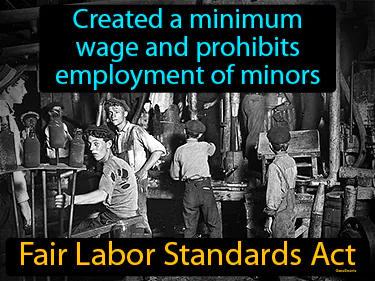
Created a minimum wage and prohibits employment of minors. Fair Labor Standards Act. The Fair Labor Standards Act, passed in 1938, set rules for minimum wage and restricted child labor to protect workers.
Federal Art Project

A New Deal program to fund the visual arts in the US. Federal Art Project. The Federal Art Project was a government program during the Great Depression that supported artists and created public art to boost employment and morale.
Federal Deposit Insurance Corporation

Provides deposit insurance to depositors in US banks. Federal Deposit Insurance Corporation. The Federal Deposit Insurance Corporation FDIC was created during the Great Depression to protect people's bank deposits and restore trust in the American banking system.
Federal Securities Act
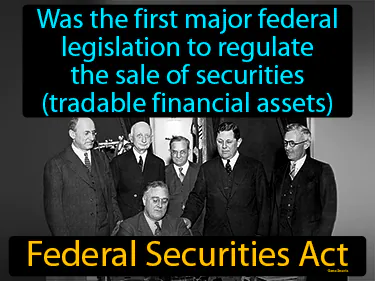
Was the first major federal legislation to regulate the sale of securities tradable financial assets. Federal Securities Act. The Federal Securities Act of 1933 was a law aimed at ensuring transparency and honesty in the stock market following the 1929 crash.
fireside chat
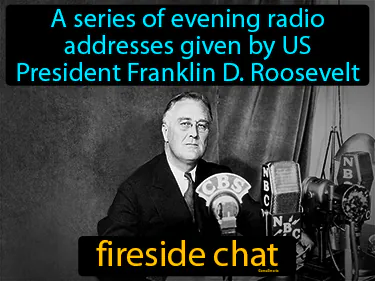
A series of evening radio addresses given by Franklin D. Roosevelt. Fireside chat. These were broadcasts where Roosevelt spoke directly to the American people to explain his policies and calm public fears.
Frances Perkins
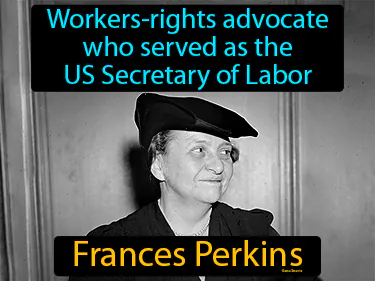
Workers-rights advocate who served as the US Secretary of Labor. Frances Perkins. She was the first woman to serve in the U.S. Cabinet and played a key role in developing the New Deal policies to improve workers' rights and social safety nets.
Frank Capra
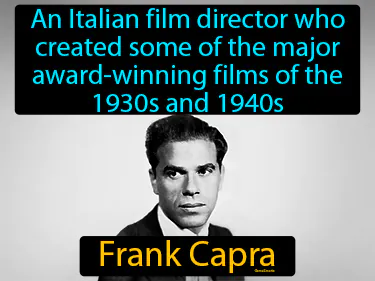
An Italian film director who created award-winning films of the 1930s and 1940s. Frank Capra. Frank Capra was an influential Hollywood director known for his inspirational films like "It's a Wonderful Life."
Franklin D Roosevelt
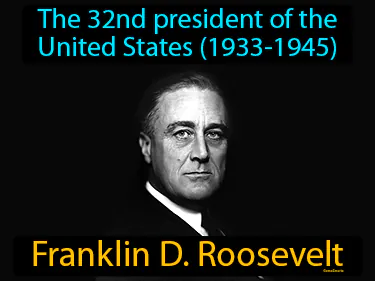
The 32nd president of the United States 1933-1945, Franklin D Roosevelt. He led the U.S. during the Great Depression and World War II, implementing the New Deal to help recover the economy.
Glass-Steagall Act

Created a separation of commercial and investment banking, preventing securities firms from taking deposits. Glass-Steagall Act. The Glass-Steagall Act was a 1933 law that aimed to protect bank customers by keeping commercial and investment banking separate.
Gone With the Wind
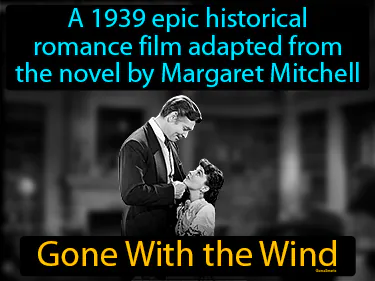
A 1939 epic historical romance film adapted from the novel by Margaret Mitchell. Gone With the Wind. It is a movie set during the American Civil War and Reconstruction era, focusing on the life of a Southern plantation owner.
Huey Long
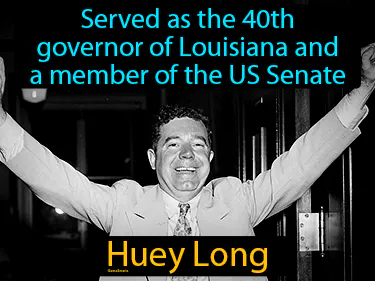
Served as the 40th governor of Louisiana and a member of the US Senate. Huey Long. He was a populist leader known for his "Share Our Wealth" program during the Great Depression.
Indian New Deal
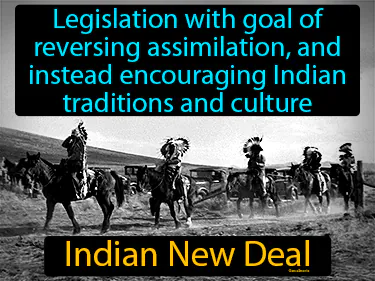
Legislation with goal of reversing assimilation, and instead encouraging Indian traditions and culture. Indian New Deal. It was a series of policies in the 1930s aimed at empowering Native American tribes and preserving their cultural heritage.
John Collier
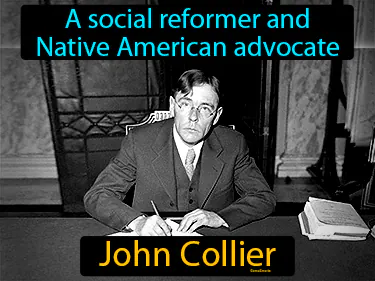
A social reformer and Native American advocate, John Collier. He was a key figure in the U.S. government who worked to reverse damaging policies and promote Native American rights during the 1930s.
John Maynard Keynes
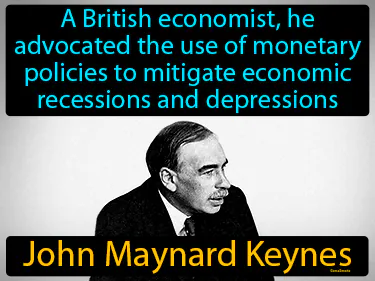
A British economist, he advocated the use of monetary policies to mitigate economic recessions and depressions. John Maynard Keynes. He is known for his revolutionary ideas that shaped modern economic policies by suggesting that governments should spend more during economic downturns to boost demand.
John Steinbeck

Won the 1962 Nobel Prize in Literature for his realistic and imaginative writings. John Steinbeck. John Steinbeck was an American author known for depicting the Great Depression's impact on American life.
Lillian Hellman
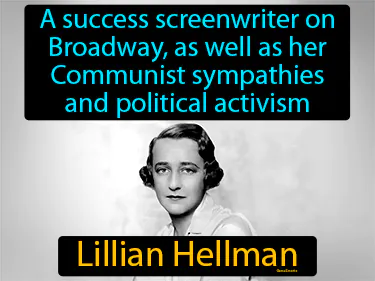
A success screenwriter on Broadway, as well as her Communist sympathies and political activism. Lillian Hellman. She was a renowned American playwright known for her powerful dramas and political activism during the mid-20th century.
Mary McLeod Bethune
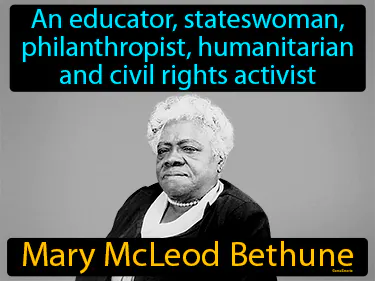
An educator, stateswoman, philanthropist, humanitarian, and civil rights activist, Mary McLeod Bethune. She was a pioneering African American leader who founded a school for Black students and worked for equal rights in the United States.
National Industrial Recovery Act
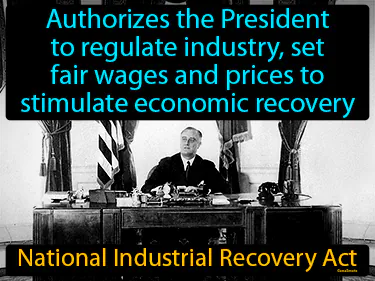
Authorizes the President to regulate industry, set fair wages and prices to stimulate economic recovery. National Industrial Recovery Act. The National Industrial Recovery Act was a 1933 law aimed at revitalizing the U.S. economy during the Great Depression by regulating industries and promoting fair labor standards.
National Labor Relations Board
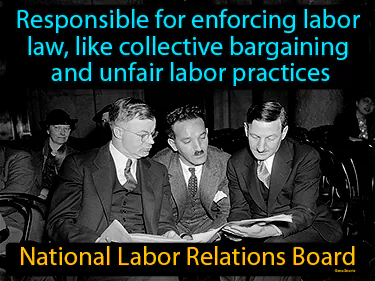
Responsible for enforcing labor law, like collective bargaining and unfair labor practices. National Labor Relations Board. The National Labor Relations Board is a U.S. government agency that ensures workers can organize and bargain with employers.
National Youth Administration
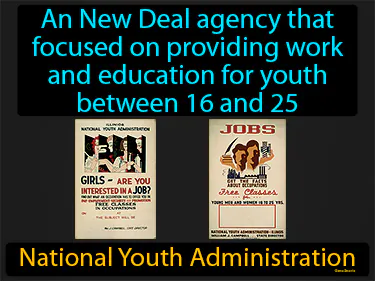
An New Deal agency that focused on providing work and education for youth between 16 and 25. National Youth Administration. The National Youth Administration was a program during the Great Depression that gave young people jobs and education.
New Deal
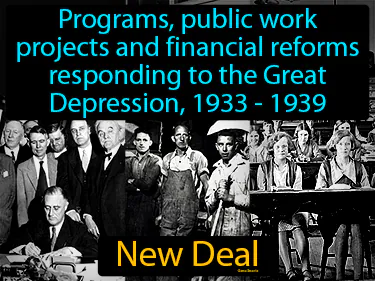
Programs, public work projects and financial reforms responding to the Great Depression, 1933 - 1939. New Deal. The New Deal was a series of government actions in the 1930s in the U.S. aimed at helping the country recover from the Great Depression.
New Deal Coalition
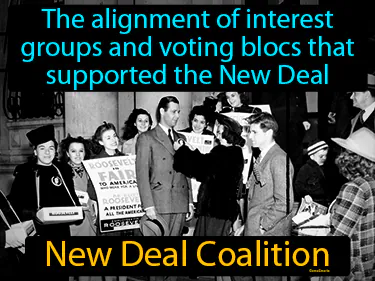
The alignment of interest groups and voting blocs that supported the New Deal. New Deal Coalition. The New Deal Coalition was a diverse group of voters who supported Franklin D. Roosevelt and the Democratic Party in the 1930s and 1940s to implement social and economic reforms.
Orson Welles

An actor and director who produced innovative work in radio, theatre and film. Orson Welles. Orson Welles is best known for his groundbreaking film "Citizen Kane."
pump priming
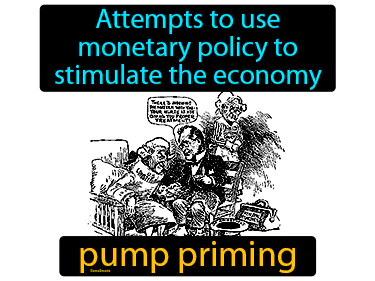
Attempts to use monetary policy to stimulate the economy. Pump priming. Pump priming is a government strategy used during the Great Depression to boost economic activity by increasing public spending.
Richard Wright

An author of novels, short stories, and poems, mostly about racial themes. Richard Wright was a key figure in American literature and a pioneer in exploring racial issues.
Second New Deal
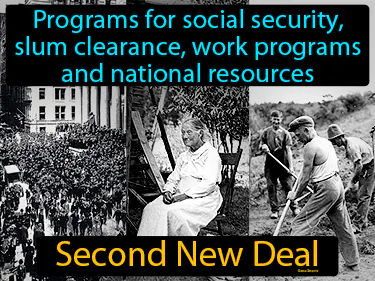
Programs for social security, slum clearance, work programs and national resources. Second New Deal. The Second New Deal was a series of programs and reforms introduced by President Franklin D. Roosevelt in the 1930s to combat the Great Depression and improve social welfare.
Securities and Exchange Commission
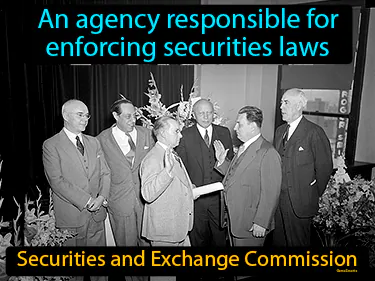
An agency responsible for enforcing securities laws, Securities and Exchange Commission. The Securities and Exchange Commission SEC is a U.S. government agency created to protect investors and ensure fair markets.
sit-down strike
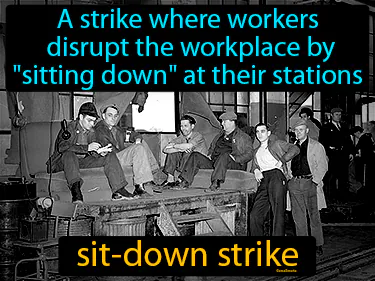
A strike where workers disrupt the workplace by "sitting down" at their stations. A sit-down strike is when workers stop working but remain at their workstations to protest for better conditions or pay.
Social Security Act
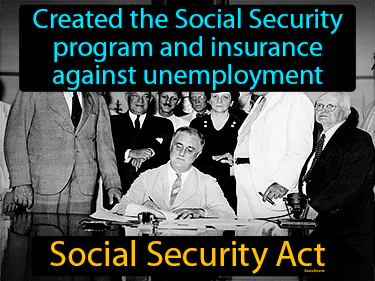
Created the Social Security program and insurance against unemployment. Social Security Act. The Social Security Act, enacted in 1935, established a system of financial support for retirees and the unemployed in the United States.
Tennessee Valley Authority

Provided economic development to the Tennessee Valley during the Great Depression. Tennessee Valley Authority. The Tennessee Valley Authority is a government agency created in 1933 to build dams and power plants to improve the economy and infrastructure in the Tennessee Valley region.
The Grapes of Wrath

A realist novel written by John Steinbeck set during the Great Depression. The Grapes of Wrath. It tells the story of a family's struggles during the 1930s Dust Bowl migration to California.
Wagner Act
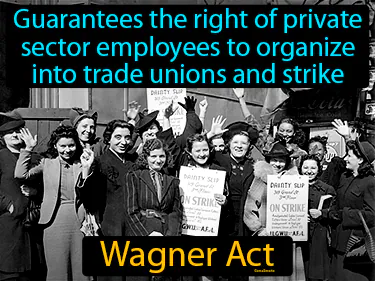
Guarantees the right of private sector employees to organize into trade unions and strike. Wagner Act. The Wagner Act, enacted in 1935, is a key U.S. labor law that supports workers' rights to unionize and collectively bargain.
welfare state
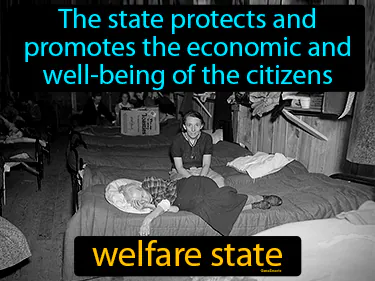
The state protects and promotes the economic and well-being of the citizens welfare state. A welfare state is a government system where the state plays a key role in providing social and economic security through programs like healthcare, pensions, and unemployment benefits.
Works Progress Administration
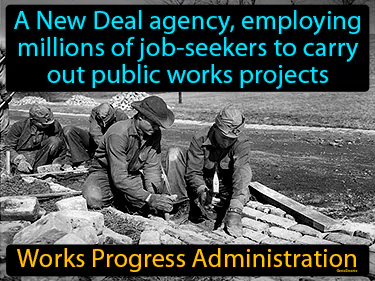
A New Deal agency, employing millions of job-seekers to carry out public works projects. Works Progress Administration. The Works Progress Administration was a U.S. government program in the 1930s that created jobs during the Great Depression by building public projects like roads and schools.